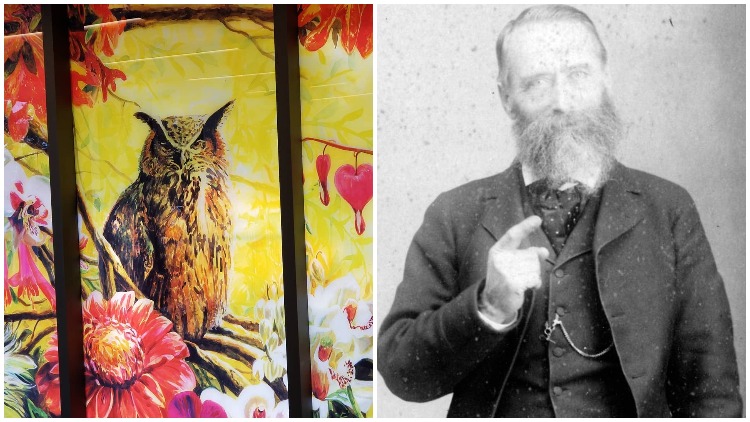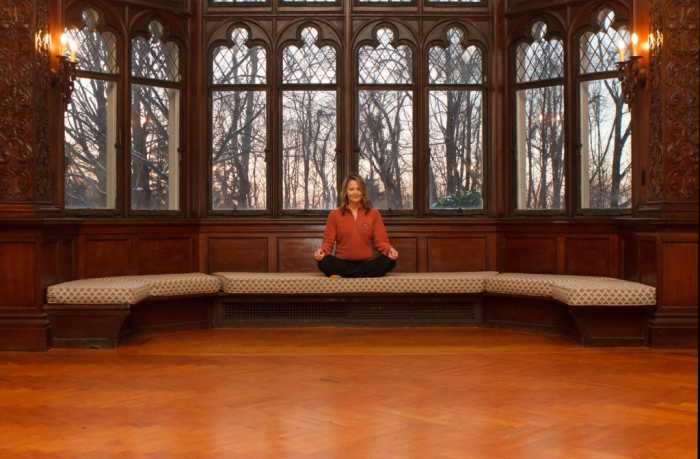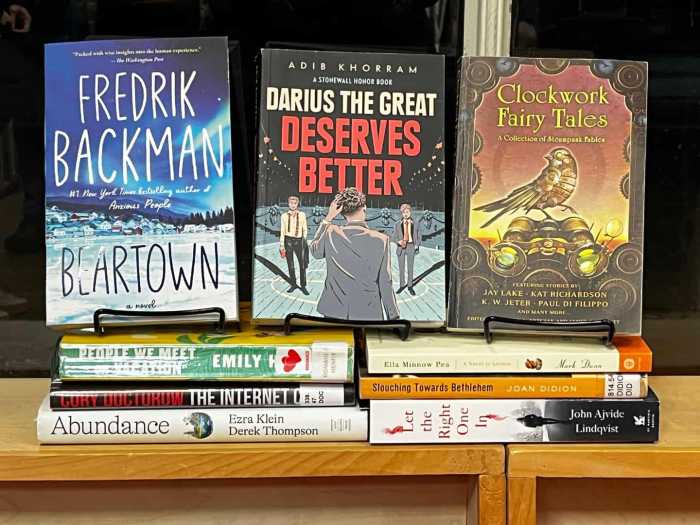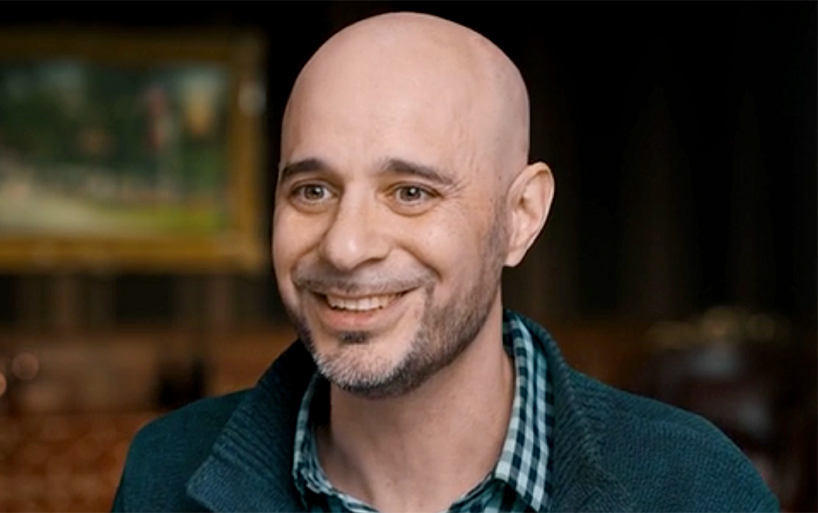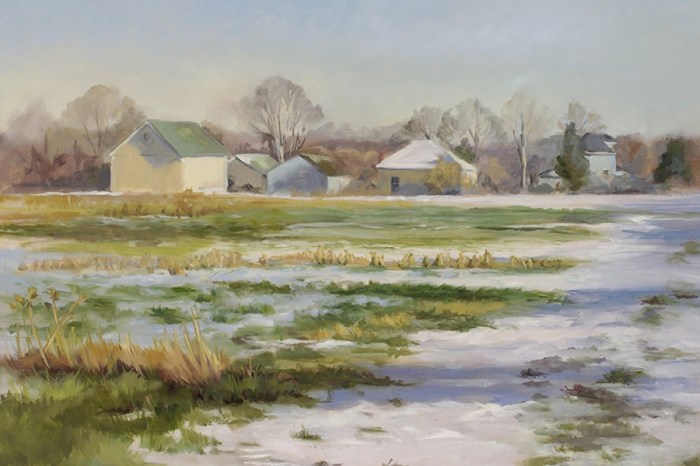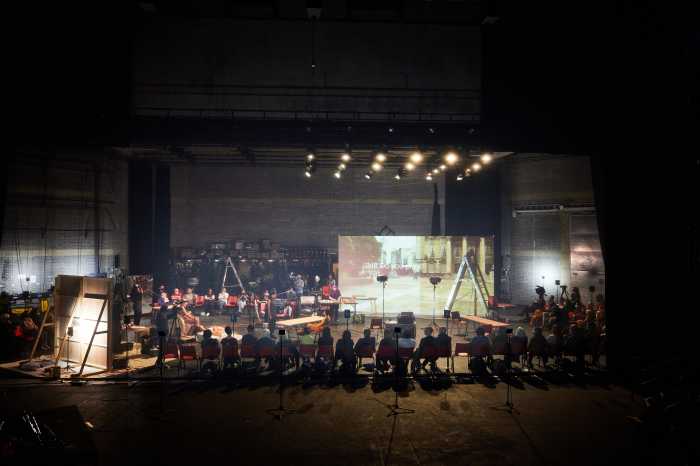It was a wild, stormy night. The evergreen boughs, loaded with ice, swayed heavily in the wind, sighing and moaning as they scraped against the house.
In the deep, despairing darkness, many may have been suffering. Some might even have perished, wretched on the treacherous coast, frozen in the rigging, or drowned in the surf pounding with a deep roar on the shores of the Island.
The wind howled as the clock struck midnight. The night promised to be rough.
These words paraphrase Charles A. Codman’s 1877 tale, a fable about a great uneasy wandering human spirit that swooped through the storm into Codman’s Brentwood house in the form of an owl — an owl that spoke and told a tale of woe.
EXPERIMENTAL SOCIETY
The place Codman called home was not your typical suburb. Originally created as Thompson Station and Suffolk Station in 1844 as new Long Island Rail Road stations, its character radically shifted in 1851, when it became a utopian village named Modern Times. It was one of many social experiments throughout the country that prized individual liberty and the absence of greed, the only such society on LI, and the first community to be built by the railroad tracks. Residents planted fruit trees along the roads to feed travelers and successfully cultivated the Pine Barrens, formerly perceived as an agricultural wasteland. Everyone enjoyed freedom of expression, food, and shelter, and there were no jails, judges, or taxes.
Codman became a resident in 1857 when Modern Times was at its peak and worked as a paper boxmaker, sign maker, and cabinetmaker; later, he was described as a bookkeeper and booklover because of his large book collection, as well as a painter and hermit. He was active in community improvements and served as a school board trustee. He was so well regarded that Brentwood named a street after him. Living in the pine-surrounded house he and his wife built on the northeast corner of Second Avenue and Brentwood Road, he saw Modern Times fail and be incorporated as Brentwood in 1864.
In 1877, he composed his occult fantasy, The Legend of the Red Owl.
SPIRIT RESCUE
The legend he imagined tells how he went to shut a window against the elements and saw two red eyes peering at him through the gloom. It was a red owl, perched on a nearby branch. To his astonishment, the bird spoke, asking him to be kind.
Codman replied, “I rejoice in the equal freedom for others, each according to his kind, free and fair, and this includes birds of the air.”
The bird fluttered its wings and flew to Codman’s extended hand. It told him it was not a bird, but the condemned, restless spirit of a slain Native American chief.
“Listen! Three thousand moons ago I was like thee in the flesh — a living man, chief of my tribe — Oriwos, by name, the terror of the Quinnebough….I ruled this Island when the white man landed, and him I did befriend, till slain in mortal combat when my braves fled hard pressed before the victorious Mohawks, who were as the leaves of the forest. I fell in yonder ravine, the last of my race, and there my bones remain unburied to this day, bleaching in the summer sun and mouldering in the winter storms.”
Codman asked how the chief died and the owl answered, “I was slaughtered like any dog, paleface. I would have done the same by him, had I the victor been. But woe is me — there my bones unburied lie and, until they are in the bosom of the earth entombed, so long must I wander an uneasy spirit.”
The owl told Codman to bury its bones and hide its mortal remains from the sunlight, and flew away. The next day, Codman “reverently gathered the remaining fragments and gave them decent sepulcher, bestrewing the grave with needles of the pine to make all decent there,” he wrote.
Three days later, the owl returned in the glimmer of the gloaming and said, “Thou hast done well and from henceforth I will be thy friend, will shield thee from adversity and make thee respected of men. I will be thy guardian angel and providence. Hang thee my picture on the wall that thou might cherish my memory. I bestow my name on thy wigwam. It shall be known forever — for all time — as — “The Hermitage of The Red Owl!”
Codman ended his tale saying, “The spirit vanished, and since that hour all has been well with me.” He died in 1911 and is buried in Brentwood Cemetery.
Related Story: Where Brentwood Is Today Once Stood Long Island’s Own Utopia
For more Rear View columns on Long Island history, visit longislandpress.com/category/past-present/rear-view
Sign up for Long Island Press’ email newsletters here. Sign up for home delivery of Long Island Press here. Sign up for discounts by becoming a Long Island Press community partner here.




